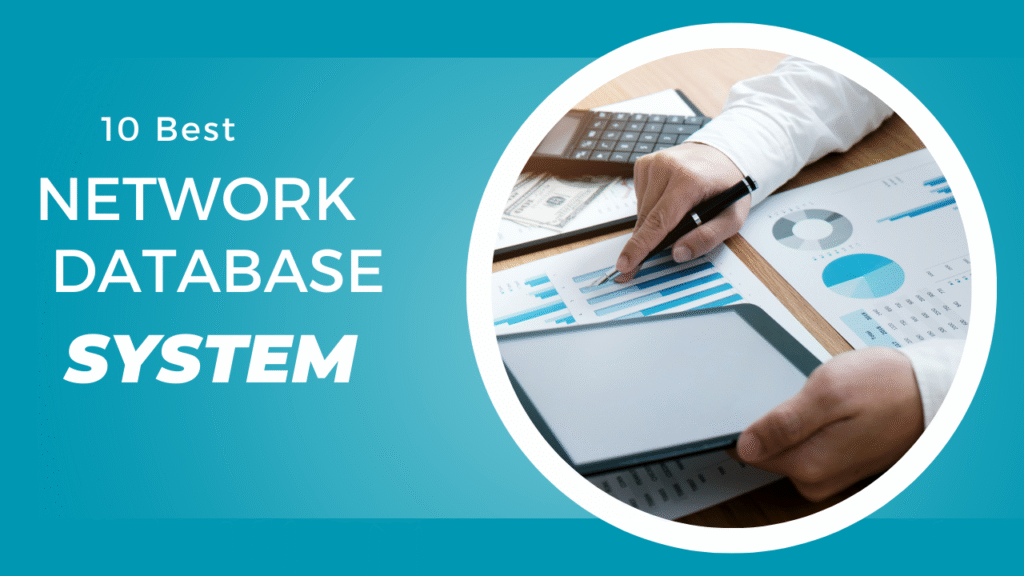Top 10 Best Network Database Systems in 2025
Network databases are designed to represent complex many-to-many relationships using nodes and links (or records and sets). While the classical network model isn’t as widely used as relational or NoSQL models today, modern use cases like IoT, knowledge graphs, and social networks have sparked a resurgence in interest in network-like and graph databases.
Here are the top 10 network database systems — a mix of traditional and modern tools — for 2025:
1. Neo4j
Type: Graph database (network model inspired)
Best for: Social networks, fraud detection, recommendation engines
🔹 Neo4j is the most popular graph database and mimics network databases by storing data in nodes and relationships. It uses the Cypher query language and excels at complex relationship-based queries.
✅ Features:
- ACID-compliant
- Visualization of data relationships
- Scalable and cloud-ready (AuraDB)
2. Oracle NoSQL (with Oracle Spatial and Graph)
Type: Network-like/graph-capable extension of Oracle DB
Best for: Enterprise analytics, geospatial networks
🔹 Oracle’s solution includes a powerful graph engine with a property graph model, combining relational and graph data in the same ecosystem.
✅ Features:
- Supports both property and RDF graphs
- Advanced analytics with PGQL (Property Graph Query Language)
- Integrates with Oracle DB and Big Data
3. AllegroGraph
Type: Graph/network-oriented RDF database
Best for: Knowledge graphs, AI applications, healthcare
🔹 AllegroGraph is an enterprise-level, RDF-based graph database designed for semantic web and linked data applications.
✅ Features:
- SPARQL support
- Geo-temporal data
- AI reasoning and natural language processing support
4. TigerGraph
Type: Native parallel graph database
Best for: Real-time big data analytics, financial services
🔹 TigerGraph is optimized for deep link analytics (e.g., “find all customers who are 4 degrees of separation from X”) at massive scale.
✅ Features:
- Distributed architecture
- GSQL query language
- High performance on multi-hop queries
5. IBM Db2 with Graph Extensions
Type: Hybrid (Relational + Network)
Best for: Enterprises using IBM ecosystems
🔹 IBM’s Db2 database can be enhanced with graph features, allowing network-style queries while maintaining relational foundations.
✅ Features:
- Graph views on relational data
- Visual data exploration tools
- Integration with IBM Watson and Cloud Pak
6. InterSystems IRIS
Type: Multi-model (Object + Network + SQL)
Best for: Healthcare, banking, mission-critical apps
🔹 IRIS supports multi-model data access, including object-oriented and network models. It’s used where real-time transactional and analytic processing is required.
✅ Features:
- Horizontal scalability
- Embedded analytics
- SQL and object data access
7. Virtuoso by OpenLink
Type: Multi-model (RDF, Graph, SQL)
Best for: Open data, semantic web, academic research
🔹 Virtuoso combines graph, relational, and document models, supporting SPARQL and SQL for querying structured and semi-structured data.
✅ Features:
- Semantic web support
- High-performance linked data server
- Web-friendly data publishing
8. Dgraph
Type: Distributed graph database
Best for: Cloud-native apps, recommendation engines
🔹 Dgraph is designed for speed and scalability. It uses GraphQL-like syntax and is optimized for low-latency graph queries.
✅ Features:
- Distributed and cloud-ready
- GraphQL query language support
- Built-in access control
9. IDS (Integrated Data Store)
Type: Classical Network DBMS
Best for: Legacy systems, education, historical analysis
🔹 IDS by Charles Bachman (developed in the 1960s) is one of the earliest network databases and is still studied for educational purposes. It uses set structures and record types to define relationships.
✅ Features:
- True implementation of the CODASYL model
- Efficient pointer-based navigation
- Best for historical interest and legacy system maintenance
10. JanusGraph
Type: Distributed graph database (Apache TinkerPop-based)
Best for: Large-scale analytics, enterprise data lakes
🔹 JanusGraph is an open-source, highly scalable graph database designed to support millions of vertices and edges, integrated with big data systems like Cassandra and HBase.
✅ Features:
- Apache TinkerPop Gremlin support
- Scales horizontally
- Good for telecom, IoT, logistics
📊 Quick Comparison Table
| Database | Model | Best For | Language Support |
|---|---|---|---|
| Neo4j | Graph | Social, fraud detection | Cypher |
| Oracle Graph | Relational + Graph | Enterprise analytics | SQL, PGQL |
| AllegroGraph | RDF/Triple Store | Semantic web, healthcare | SPARQL |
| TigerGraph | Native Graph | Big data, fintech | GSQL |
| IBM Db2 Graph | Hybrid | Enterprises with existing DB2 systems | SQL, Gremlin |
| InterSystems IRIS | Multi-model | Real-time analytics | SQL, ObjectScript |
| Virtuoso | RDF/SQL/Graph | Open data, research | SQL, SPARQL |
| Dgraph | Distributed Graph | Web apps, recommendations | GraphQL+- |
| IDS (Legacy) | Classical Network | Legacy education, mainframes | COBOL, assembler |
| JanusGraph | Distributed Graph | Telecom, IoT, logistics | Gremlin, TinkerPop |
Final Thoughts
In 2025, network databases have evolved beyond their classical definitions. Today, graph databases and multi-model systems offer powerful, modern alternatives that reflect the original network model’s strengths — flexible relationships, fast traversal, and rich interconnections.
Whether you’re building a social app, analyzing massive enterprise graphs, or maintaining legacy systems, there’s a network database built for your needs.
